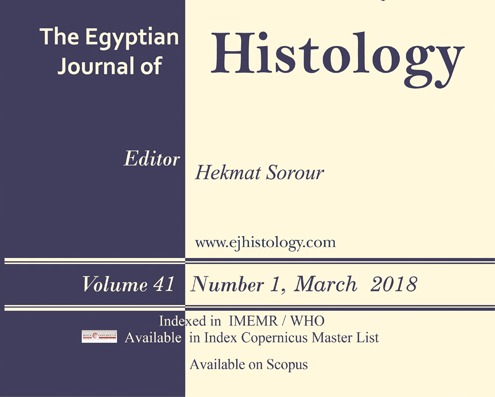Titanium dioxide nanoparticles (Tio2 NPs) are manufactured worldwide in large quantities for use in a wide range of applications. TiO2 NPs proved to damage liver function and induce an oxidative stress attack leading to liver toxicity. Milk thistle is an herbal supplement used to treat liver and biliary disorders. Silymarin, an active ingredient of milk thistle, is a strong antioxidant that promotes liver cell regeneration and stabilizes cell membranes. Aim: To investigate the biochemical, the histological and the histochemical changes in the liver after administration of different doses of Tio2 NPs and to evaluate the possible protective role of Milk thistle against these effects. Materials and Methods: Fifty adult male rats were divided into five groups; group I control, groups IIa and IIIa injected IP by 100mg/kg and 150mg/kg TiO2 for 2 weeks, respectively and groups IIb and 111b treated by oral milk thistle 4 weeks; one week prior, 2 weeks concomitant with IP 100mg/kg and 150mg/kg TiO2, respectively and the forth week after injection. Thereafter, rats were sacrificed and liver as well as blood samples were collected for estimation of serum alanine aminotransferase (ALT) and alkaline phosphatase (ALPs). Liver samples were processed for examination by TEM and immunohistochemical staining with P53 and PCNA antibodies counted statistically positive cells. Results: There was an increase in ALT and ALPs activities. Groups 11a and 111a treated by TiO2 showed signs of apoptosis and degeneration in the hepatocytes with nuclear changes and a significant increase in P53 and PCNA antibodies positive cells. These changes were ameliorated by concomitant injection with milk thistle with TiO2 in groups IIb and IIIb. Conclusion: The alterations observed might be an indication of hepatocyte injury due to TiO2 NPs toxicity that interacts with proteins and enzymes in hepatic tissue leading to generation of reactive oxygen species induce hepatocytes apoptosis. Milk thistle, has a hepatoprotective effect probably by its antioxidant effect.


